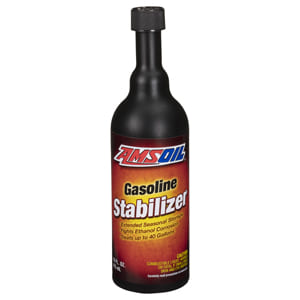In the realm of powersports, understanding the differences between 2 cycle oil and 4 cycle oil is crucial for optimizing engine performance and longevity. This comprehensive guide provides detailed insights into the functional and technical aspects of both types of oils, helping enthusiasts make informed decisions.
Two-Stroke vs Four-Stroke Engines

Definition of Two-Stroke and Four-Stroke Engines
A two-stroke (2-stroke) engine completes a power cycle with two strokes of the piston during only one crankshaft revolution, which means it fires once every revolution. Conversely, a four-stroke (4-stroke) engine completes a power cycle with four strokes over two revolutions of the crankshaft, firing once every other revolution.
Comparison of Exhaust Pulses at the Same RPM
At the same RPM, a 2-stroke engine produces twice as many exhaust pulses as a 4-stroke engine. This means that 2-stroke engines tend to have a higher power-to-weight ratio but can also be less fuel-efficient and generate more emissions.
Real-World Testing of AMSOIL
Hands-On Oil Testing
Experts at AMSOIL engage in rigorous testing of their oils under the harshest conditions to ensure optimal performance. This includes pushing the oils to failure points to identify areas for improvement. These extreme tests validate the durability and efficacy of AMSOIL products.
Two-Stroke Engine Parts
Common components of a two-stroke engine include pistons, power valves, and exhaust systems. These parts are subject to high levels of stress and require oils that can provide exceptional protection and cleanliness.
Rental Fleet Testing
Explanation of Rental Fleet Abuse
Rental fleets are a suitable testing ground due to their high usage and the variety of operational conditions they face. For instance, AMSOIL tested their oils on a snowmobile in a rental fleet for an entire season. Post-season analysis revealed crucial insights into piston protection and cleanliness.

Two-Stroke Engine Protection Factors
Piston Protection and Engine Cleanliness
In a 2-stroke engine, oil is consumed during operation, leading to the accumulation of deposits in the exhaust and power valves. High-quality oils are essential for maintaining piston protection, engine cleanliness, and overall performance, especially in cold temperatures as observed in the snowmobile tests.
Common Two-Stroke Engine Issues
Issues commonly associated with 2-stroke engines include dirty exhaust systems and power valves. These problems can diminish engine performance and longevity, underscoring the importance of selecting the right oil.
Key Performance Factors for Two-Stroke Oils
Essential Performance Metrics
2-stroke oils must excel in piston protection, power valve cleanliness, and cold temperature performance. These factors are crucial in ensuring the reliability and efficiency of engines under demanding conditions.
Types of Two-Stroke Oils
INTERCEPTOR® vs DOMINATOR®
AMSOIL offers two primary types of 2-stroke oils: INTERCEPTOR® and DOMINATOR®. Each is formulated for specific applications to meet the needs of different users.
INTERCEPTOR® Oil
Designed for Oil-Injected Engines
INTERCEPTOR® oil is tailored for oil-injected engines, such as those found in snowmobiles. It provides balanced performance across essential metrics, including cold temperature performance, making it suitable for a wide range of operating conditions.
INTERCEPTOR® Oil Performance Factors
INTERCEPTOR® oil ensures exceptional cold temperature performance along with comprehensive protection against wear and deposits. This balance makes it an ideal choice for consistent and reliable operation.
DOMINATOR® Oil
Designed for Racing and High-Performance Use
DOMINATOR® oil is specifically designed for racing and other high-performance applications. It is recommended for vehicles such as dirt bikes that operate under extreme conditions and require maximum protection and performance.
DOMINATOR® Oil Applications
DOMINATOR® oil is ideal for track racing and competitive events where engines are subject to intense abuse. Its formulation ensures that it can withstand the stresses of high-speed and high-load operations.
AMSOIL Testing Process

Overview of Testing Methods
AMSOIL employs a rigorous testing process that includes real-world and laboratory-based evaluations. This comprehensive approach ensures that their oils meet the highest standards of performance and reliability.
Benefits of AMSOIL Products
Protection Against Abuse and Everyday Use Benefits
Whether for high-abuse scenarios or regular daily use, AMSOIL products offer unparalleled protection and performance. Their oils are engineered to maintain engine integrity and efficiency under varied conditions.
Importance of Proper Oil Selection
Impact on Engine Longevity and Performance Benefits
Choosing the right oil is critical for ensuring engine longevity and optimal performance. Proper oil selection reduces wear, minimizes deposits, and improves overall efficiency.
Two-Stroke Engine Maintenance Tips
Regular Oil Changes and Proper Mixing Ratios
Regular oil changes and maintaining the correct oil-to-fuel mixing ratios are essential for the upkeep of 2-stroke engines. These practices help in preventing wear and maximizing engine life.
Signs of Two-Stroke Engine Wear
Visual Indicators and Performance Issues
Indicators of engine wear include diminished performance, increased exhaust smoke, and unusual noises. Recognizing these signs early helps in addressing issues before they become severe.
Two-Stroke vs Four-Stroke Maintenance

Comparison of Maintenance Requirements
2-stroke engines typically require more frequent maintenance due to their higher wear rates and oil consumption. In contrast, 4-stroke engines, while more complex, benefit from more extended maintenance intervals.
Environmental Considerations
Emissions Differences and Modern Improvements
2-stroke engines generally produce more emissions compared to 4-stroke engines. However, advancements in oil formulations and engine technology have helped in reducing the environmental impact.
Two-Stroke Engine Applications
Common Vehicles and Tools
2-stroke engines are commonly used in dirt bikes, snowmobiles, and various small tools like chainsaws and leaf blowers. Their ability to provide high power output makes them ideal for these applications.
History of Two-Stroke Engines
Brief Timeline of Development
The two-stroke engine has undergone significant development since its inception in the late 19th century. Key innovations have focused on improving efficiency, power output, and reducing emissions.

Future of Two-Stroke Engines
Emerging Technologies and Potential Improvements
Future advancements in two-stroke engine technology are likely to focus on further reducing emissions, improving fuel efficiency, and enhancing overall performance through innovative design and materials.
Two-Stroke Engine Tuning
Importance and Basic Tuning Tips
Proper tuning of a two-stroke engine is crucial for achieving optimal performance. Basic tuning tips include adjusting the carburetor and ignition timing to ensure the engine runs smoothly and efficiently.
Two-Stroke Fuel Requirements
Proper Fuel Selection and Mixing Ratios
Selecting the right fuel and maintaining precise mixing ratios are critical for the proper functioning of 2-stroke engines. Using high-quality fuels and oils can significantly enhance engine performance and longevity.
Two-Stroke Engine Troubleshooting
Common Issues and Basic Diagnostics
Common troubleshooting steps for 2-stroke engines include checking for fuel delivery problems, inspecting spark plugs, and ensuring there are no air leaks. Proper diagnostics help in identifying and rectifying issues promptly.

Two-Stroke Engine Rebuilding
When to Consider Rebuilding and Basic Process
Rebuilding a two-stroke engine may be necessary when performance significantly drops or if there are substantial wear and tear. The basic process involves disassembling the engine, inspecting and replacing worn parts, and reassembling it to factory specifications.
Two-Stroke Engine Performance Modifications
Popular Upgrades and Potential Benefits
Popular performance modifications for two-stroke engines include porting, polishing, and upgrading the exhaust system. These modifications can lead to increased power output and improved engine response.
Two-Stroke Engine Sound Characteristics
Explanation and Comparison
The distinct sound of a two-stroke engine is a result of its firing frequency and exhaust design. This sound is generally higher-pitched and more pronounced compared to the smoother hum of a four-stroke engine.
Two-Stroke Engine Power-to-Weight Ratio
Advantages in Certain Applications
Two-stroke engines possess a high power-to-weight ratio, making them suitable for applications where weight savings are critical, such as in motorcycles and certain types of racing engines.

Two-Stroke Engine Cooling Systems
Air-Cooled vs Liquid-Cooled
Two-stroke engines can employ either air-cooled or liquid-cooled systems. Air-cooled engines are simpler and lighter, while liquid-cooled engines offer better temperature regulation and consistent performance.
Two-Stroke Engine Lubrication Systems
Oil Injection vs Premix
Two-stroke engines can use either oil injection systems, which automatically mix oil with fuel, or premix systems, where the oil and fuel are mixed manually. Each system has its own set of advantages and drawbacks.
Two-Stroke Engine Exhaust Systems
Importance and Design Considerations
Proper exhaust system design, such as expansion chambers, is crucial for the performance of two-stroke engines. These systems help in scavenging exhaust gases and enhancing power output.
Two-Stroke Engine Intake Systems
Reed Valves and Rotary Valves
Two-stroke engines can utilize reed valves or rotary valves for efficient air-fuel mixture intake. Each system has distinct advantages, with reed valves being more common due to their simplicity and effectiveness.
Two-Stroke Engine Ignition Systems
CDI vs Traditional Systems
Modern two-stroke engines often use Capacitor Discharge Ignition (CDI) systems, which offer better reliability and performance compared to traditional points-based ignition systems.
Two-Stroke Engine Pistons
Design and Material Considerations
Pistons in two-stroke engines are designed to withstand high temperatures and pressures. Materials like forged aluminum are commonly used for their strength and heat dissipation properties.
Two-Stroke Engine Cylinder Porting
Explanation and Performance Impact
Cylinder porting involves modifying the size and shape of the engine’s intake and exhaust ports. Proper porting can significantly enhance engine performance by improving airflow and fuel mixture distribution.
Two-Stroke Engine Crankshaft Design
Differences and Importance
The crankshaft design in two-stroke engines differs from that in four-stroke engines due to the need for balance and durability under high RPM conditions. Ensuring proper balance is critical for smooth operation.
Two-Stroke Engine Bearings
Types and Maintenance
Two-stroke engines use various types of bearings, including needle and ball bearings, to reduce friction. Regular maintenance and lubrication are essential to ensure the longevity of these components.
Two-Stroke Engine Gaskets and Seals
Common Failure Points
Gaskets and seals are critical for preventing leaks and ensuring proper compression in two-stroke engines. High-quality materials and proper installation are essential for maintaining engine integrity.
Two-Stroke Engine Break-In Process
Importance and Procedure
A proper break-in process involves gradually increasing engine load and RPM to ensure that all moving parts settle in correctly. This helps in maximizing engine life and performance.
Two-Stroke Engine Storage Tips
Proper Techniques and Winterization
Proper storage techniques, including draining fuel and lubricating internal components, are essential to prevent damage when the engine is not in use. Winterization is particularly important for seasonal equipment.
Two-Stroke Engine Racing Applications
Popular Classes and Considerations
Two-stroke engines are widely used in various racing classes due to their high performance and power-to-weight ratio. Ensuring optimal engine tuning and selection of high-quality oils are key considerations.
Two-Stroke Engine Emissions Control
Modern Techniques and Challenges
Reducing emissions in two-stroke engines involves advanced techniques such as direct fuel injection and catalytic converters. These methods help in meeting stringent regulatory standards while maintaining performance.
Two-Stroke Engine Fuel Efficiency
Comparison and Influencing Factors
While two-stroke engines tend to be less fuel-efficient than four-stroke engines, advancements in technology and oil formulations have led to significant improvements. Factors such as tuning and maintenance also play a crucial role.
Two-Stroke Engine Power Valves

Function and Maintenance
Power valves play a vital role in optimizing the performance of two-stroke engines across different RPM ranges. Regular maintenance is essential to prevent deposits and ensure smooth operation.
Two-Stroke Engine Carburetion
Basics and Jetting Considerations
Carburetors in two-stroke engines are responsible for mixing air and fuel. Proper jetting is critical for ensuring the correct air-fuel ratio, which directly impacts performance and efficiency.
Two-Stroke Engine Fuel Injection
Modern Systems and Advantages
Fuel injection systems in two-stroke engines offer more precise fuel delivery compared to carburetors, leading to improved performance, fuel efficiency, and reduced emissions.
Two-Stroke Engine Crankcase Design
Importance of Volume and Impact
The design and volume of the crankcase in two-stroke engines affect performance by influencing the scavenging process. Optimal crankcase design ensures efficient fuel mixture distribution and power output.
Two-Stroke Engine Transmission Types

Separate vs Integral
Two-stroke engines can have separate or integral transmissions. Integral transmissions are more compact and lightweight, making them suitable for applications where space and weight are critical.
Two-Stroke Engine Oil Pumps
Function and Maintenance
Oil pumps in oil-injected two-stroke engines ensure consistent lubrication, reducing wear and improving performance. Regular maintenance of these pumps is essential to prevent failures.
Two-Stroke Engine Balancing
Importance and Methods
Proper balancing of a two-stroke engine’s rotating components is crucial for minimizing vibrations and ensuring smooth operation. This involves precise weighting and alignment of components.
In conclusion, understanding the distinctions between 2 cycle oil and 4 cycle oil is essential for anyone involved in powersports. Each type of oil has its unique characteristics, benefits, and applications, and selecting the right oil can significantly enhance engine performance and longevity. AMSOIL provides high-quality, rigorously tested oils that meet the demanding needs of both 2-stroke and 4-stroke engines.

